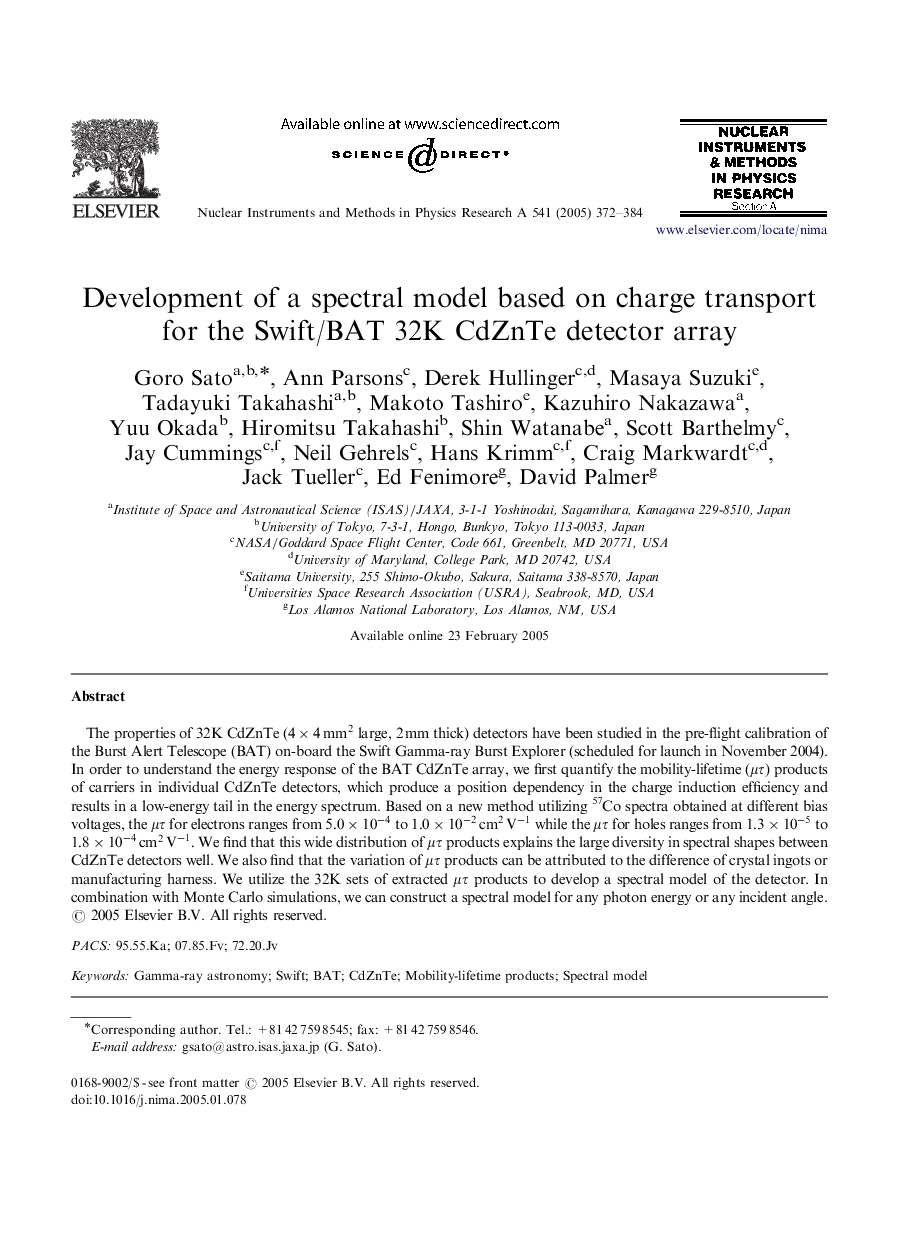| Article ID | Journal | Published Year | Pages | File Type |
|---|---|---|---|---|
| 9845668 | Nuclear Instruments and Methods in Physics Research Section A: Accelerators, Spectrometers, Detectors and Associated Equipment | 2005 | 13 Pages |
Abstract
The properties of 32K CdZnTe (4Ã4mm2 large, 2 mm thick) detectors have been studied in the pre-flight calibration of the Burst Alert Telescope (BAT) on-board the Swift Gamma-ray Burst Explorer (scheduled for launch in November 2004). In order to understand the energy response of the BAT CdZnTe array, we first quantify the mobility-lifetime (μÏ) products of carriers in individual CdZnTe detectors, which produce a position dependency in the charge induction efficiency and results in a low-energy tail in the energy spectrum. Based on a new method utilizing 57Co spectra obtained at different bias voltages, the Î¼Ï for electrons ranges from 5.0Ã10-4 to 1.0Ã10-2cm2V-1 while the Î¼Ï for holes ranges from 1.3Ã10-5 to 1.8Ã10-4cm2V-1. We find that this wide distribution of Î¼Ï products explains the large diversity in spectral shapes between CdZnTe detectors well. We also find that the variation of Î¼Ï products can be attributed to the difference of crystal ingots or manufacturing harness. We utilize the 32K sets of extracted Î¼Ï products to develop a spectral model of the detector. In combination with Monte Carlo simulations, we can construct a spectral model for any photon energy or any incident angle.
Related Topics
Physical Sciences and Engineering
Physics and Astronomy
Instrumentation
Authors
Goro Sato, Ann Parsons, Derek Hullinger, Masaya Suzuki, Tadayuki Takahashi, Makoto Tashiro, Kazuhiro Nakazawa, Yuu Okada, Hiromitsu Takahashi, Shin Watanabe, Scott Barthelmy, Jay Cummings, Neil Gehrels, Hans Krimm, Craig Markwardt, Jack Tueller,
